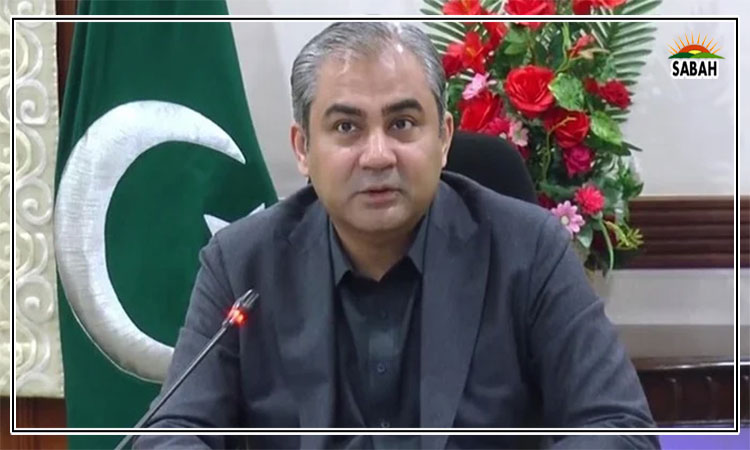Wheat woes: plenty to precarious…Dr Khaqan Hassan Najeeb & Dr Yusuf Zafar
Jubilations about the country achieving a historic bumper wheat crop have become short-lived and have instead been overtaken by the saga of slow sales and falling price levels, resulting in discomfort for the growers.
The Food Department of the government of Punjab is still contemplating whether to procure the wheat or compensate the farmers in some other manner. Late to the party, the federal government has directed PASSCO to procure a mildly higher amount than usual. Delays in decisions have led to the usual protests by the farmers and voices of concern from parliamentarians on both sides of the benches.
The traditional largest single buyer, the government, is on the sidelines with little warning thus its set reference price is no longer the market benchmark. It is alleged that the flour mills, in connivance with commodity traders, are thus in a monopolistic position. This group is driving the market and offering lower prices to the farmers compared to the Rs3900 per 40k fixed by the government. The blame for the prevalent situation has been tactfully shifted to excessive imports of around 3.5 million tons of cheaper wheat from Ukraine and the Russian Federation at the start of harvesting wheat season. This is only part of the story.
Let us review some key facts. Harvesting commenced in Sindh in late February and early March 2023. After the devastating floods in 2022, agriculture in Sindh has recovered efficiently and thus there has been a record yield of around 50 maunds of wheat per acre in the current season. To the good fortune of the Sindh farmer, their entire crop was disposed of quite smoothly before the market jitters. It is pertinent to note that ships carrying imported wheat started anchoring in November 2023 in Karachi and after two extensions of import approvals the operation was completed by March 30, 2024.
Tragically, the events in Punjab are a bit more complex. We focus on deeper issues beyond popular rhetoric. First, undue imports given the bumper crop have created an excess supply. Second, is the impact of a commitment with the World Bank under a SMART loan of $300 million by the Planning & Development department of the Punjab government in 2017-18 to gradually withdraw from wheat procurement by the start of Rabi-2022. The hesitation on the part of the Punjab food department to procure more is thus understandable.
The third issue is the hurdle in wheat procurement due to the burden of existing loan liability of nearly Rs550 billion. This was obtained by the Punjab government for wheat purchase in the last season (2022-2023) from the central bank. A higher policy rate interest payment is itself a challenge along with securing a new line of credit. Lastly, some key changes that have exacerbated the situation include the transition from the policy of issuance of jute bags to farmers to a mobile-based application. Restricting the distribution of bags to farmers of less than six acres of land has resulted in confusion and an intended delay in the procurement process.
Taking a more macro view, it is clear that this seasons import decision was taken in October 2023 ahead of the harvesting season as a routine affair. Pakistan has been a net importer of wheat for the last five years with an average cost of $1 billion. High-quality quantitative analysis would have pointed to exercising caution in imports in the current season. However, this was not the case.
Unfortunately, our ad-hoc policies have resulted in the country running a wheat deficit for the last many years. The stagnation in yields, inefficiencies of provincial food departments, smuggling of grains to the western neighbors, and above all over 2.5 per cent population growth are the key factors that have made imports inevitable. All these critical issues received little attention.
The provision of sufficient and healthy food to all the citizens of Pakistan is a constitutional obligation. The Covid-19 pandemic, conflicts in Europe and the Middle East disrupting supply chains, and the looming negative impacts of climate change have had a lasting effect on global commodity prices and availability. These factors, together with our productivity issues, have pushed the country from 92nd to 99th place in the Global Hunger Index-2023. The malnutrition percentage has climbed to 45 per cent. Consequently, the country is drifting away from SDG#2 of Zero Hunger to be achieved by 2030.
So where to from here? In the immediate, the authorities must move beyond high moisture content issues and hope that wheat storage issues can be managed using the private-sector storage facility, and secure credit for some buying to stabilize the prices. At the same time, authorities can support opportunities for export or value-added export through the private sector. Additionally, some immediate governance arrangements are also essential. We must move away from repeated changes in executive appointments. We must get professionals into key areas of agriculture departments and make agriculture a high-priority area.
In light of research and the current crisis, it is time to change the way we do wheat business. Only a comprehensive policy, redesign of institutional mechanisms, and the aim of letting competitive markets work are required to fulfill the nutritional needs of the citizens.
A smooth wheat market overhaul is possible over several seasons with the following operations. First, accurate data collection and timely decision-making are vital to prevent future crises. Second, well-regulated free markets have worked in rice, corn, cotton, and vegetables and fruit commodities they will also work in wheat. Transitioning to a market-based solution is at the heart of solving the wheat issue permanently. Operationally this means withdrawing from fixing a support price and framing export policies. This would require supporting research and development, monitoring quality, and maintaining buffer stocks, so the market can stabilize without big fluctuations in flour prices.
Third, its all about productivity. Increasing yield per acre through mechanization is essential. This can include expanding cultivation areas, giving farmers more training, and resources, and distributing certified seeds. This can help to meet the growing domestic demand for wheat and make our farmers competitive for exports.
Fourth, in its earnest desire to support the hardworking farmers, the country has to rely on direct subsidies. Direct cash transfers are the right way to reach the farmers. Fifth, an unimpressive system should be changed by gradually wrapping up PASSCO at the federal level and refocusing provincial food departments towards policymaking, supporting the growers, and maintaining strategic reserves in the warehouses in the private sector. The holding capacity of the grower and larger private sector would have to be developed along with building insurance mechanisms to manage price movements.
A reregulation of the wheat market with a gradual move to a competitive wheat market through the above-outlined steps is essential. A bigger role of the private sector in the wheat market can help distribute the burden of procurement and storage costs. This in the long- run will ensure price stability. Hopefully, the authorities are working on durable changes by fixing the underlying maladies this time.
Courtesy The News












